Public transport in Berlin
 Bashny.Net
Bashny.Net
Writes the author: chistoprudov.livejournal.com/103381.html
Lord, I fell in love with Berlin! Exploring the capital was swift and somewhat forced - I flew one, I have never met anyone and everyone that I knew - the name and address of the hotel. The motto - no taxis. With the German language in my misfortune complete, there is no cash, and in the hands of the suitcases.
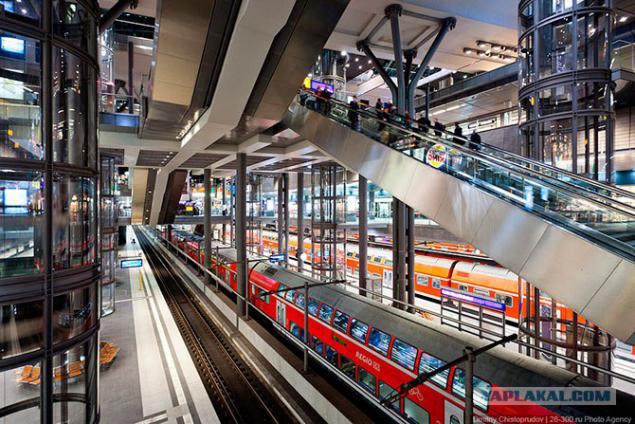
Berlin bus
First contact with the information system was held at the airport. First, I have long studied the map of the city with the scheme of public transport and look for the right crossing the street, and then choose the best way of moving - the bus 109. Lucky that route passed close to my hotel. Before leaving the terminal hangs here is the display, which is indicated on some stop and after a time approaching buses. I had 6 minutes to buy a ticket.
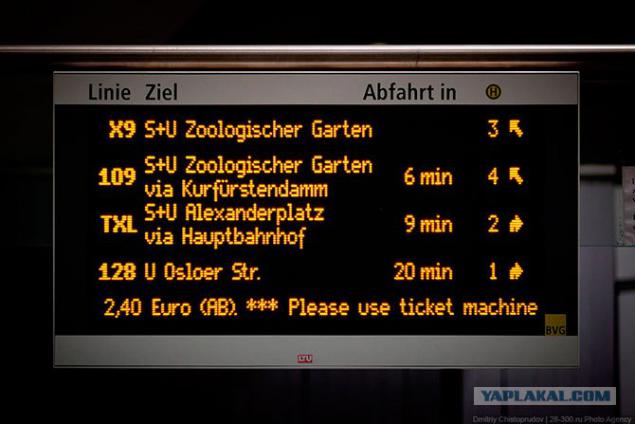
I walked towards the desired stop and saw ticket machines. Excellent. I opt for the English language and study the proposed options. A short trip - up to 6 stops on the bus or up to 3 on the metro (1, 4 euros) and an ordinary trip in one direction for two hours on any form of transport (2, 4 euros). There are a variety of travel, but I did not read about them, and chose the second option.
Surprise! The machine does not accept my sberbankovskuyu of payment card. Swears in German. Shayse, I say, and go back to the terminal in search of an ATM. While I was shooting the money, my bus left. I had to wait another 11 minutes.

When entering the bus, I said in English at the driver, I shall reach to the desired stop me. The driver nodded. I dragged bags, punched ticket and began to follow the stops.
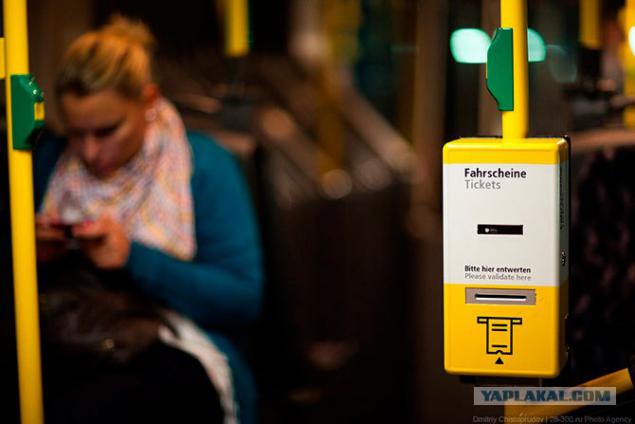
The road from the terminal to the hotel took 17 minutes of waiting, 15 minutes by bus and 7 minutes on foot. Magically!
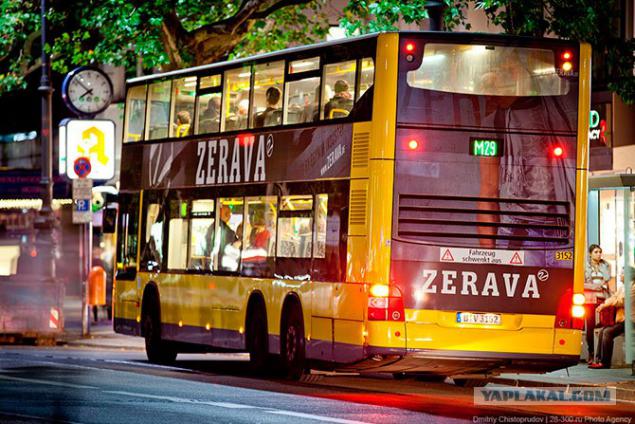
For all the time I did not see traffic jams in the city. Therefore, buses move was quite convenient, comfortable, and relatively quickly. Although I had seen as a double-decker bus driver obediently I went behind the cyclist and did not press him.

Berlin tram
Tram lines are preserved only in that part of Berlin, which was formerly the capital of the German Democratic Republic, that is East Berlin. In the middle of the twentieth century, European countries are disposed of as the tram from the "old mode of transport" and West Berlin was not an exception.
Who walks the streets of Berlin are three types of trams: Tatra KT4D and two modern low-floor GT6N and Bombardier Flexity Berlin.
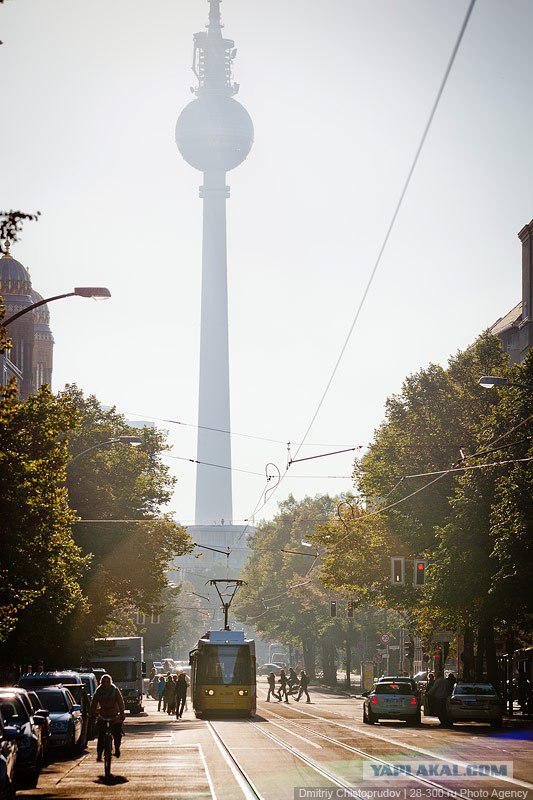
The first trams appeared in Berlin in 1865. To date, the city has 22 routes with a total length of 192 km. Czech cars Tatra KT4D (pictured) has started to operate in East Berlin in 1976 and run through the streets on this day.
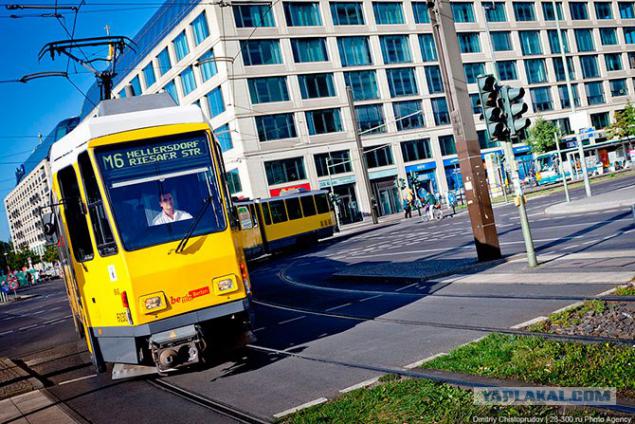
Unlike buses, where a ticket can only be bought from the driver, the cabin trams vending machines for tickets. It's damn convenient. Also, tickets can be purchased from vending machines at bus stops. This rule applies to any form of public transport in Berlin.

Trams are narrow and long. Compared with the Moscow tram - Berlin goes totally silent.
When I learned that with a pass to the exhibition I can make free use of public transport, I rode for hours through the city, replacing one form of transport to another.
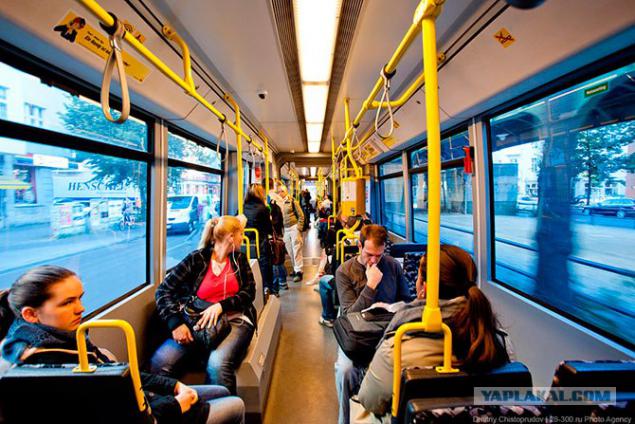
It is generally a song - how much more convenient to enter / exit the tram! Clearance not more than in the Moscow subway!

Berlin subway
Underground subway called U-Bahn and is, together with Berlin S-Bahn S-Bahn basis of the public transport of the capital.
Berlin underground - one of the oldest in the world and the oldest in Germany. At this point in the Berlin Underground network includes 173 stations and 10 lines in length 151, 7 km. About 80% of paths are underground.
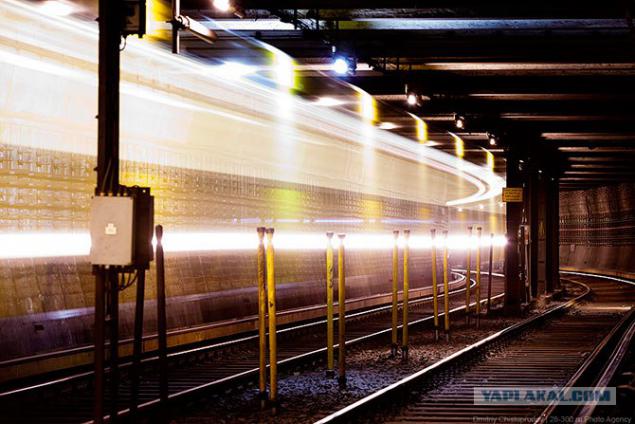
I just could not understand what I do not like the local metro. Like all German comfortably and clearly, but something is wrong. Then I realized - the ceiling height. At all stations, where I stayed, the ceiling height in our subways. After our subway is very unusual. There is a feeling of closeness. Back in Berlin subway is much hotter than outside.

Since navigation is no problem for most of the stations are equipped with electronic display indicating the waiting time until the next train, and the direction of motion. Still no turnstiles in the subway and grandmothers have escalators, but there is an urn!
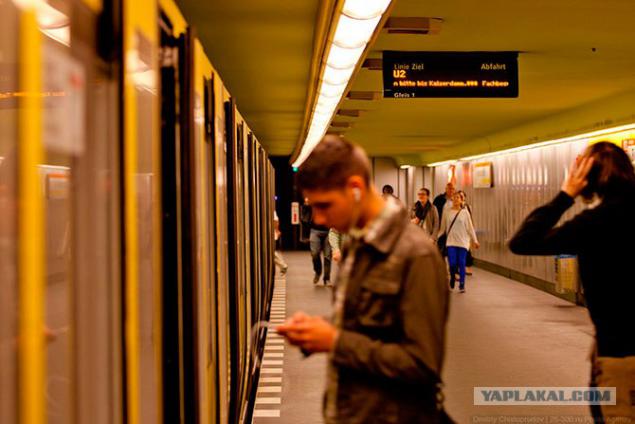
In the car on the scoreboard displayed the name of the next station, which is duplicated voice message. Before closing the door and hear a special signal over the door switch on the red light bulb.
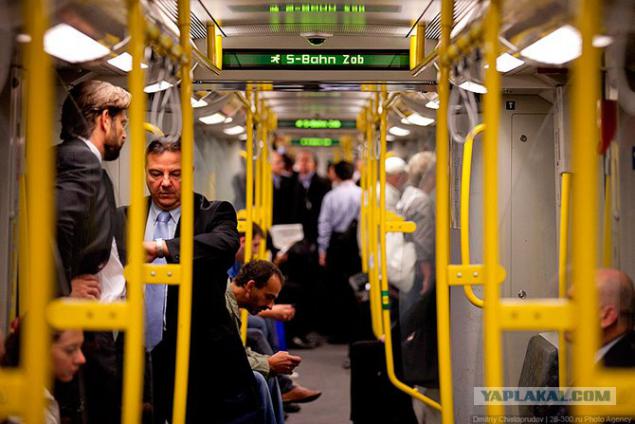
Source:
Lord, I fell in love with Berlin! Exploring the capital was swift and somewhat forced - I flew one, I have never met anyone and everyone that I knew - the name and address of the hotel. The motto - no taxis. With the German language in my misfortune complete, there is no cash, and in the hands of the suitcases.

Berlin bus
First contact with the information system was held at the airport. First, I have long studied the map of the city with the scheme of public transport and look for the right crossing the street, and then choose the best way of moving - the bus 109. Lucky that route passed close to my hotel. Before leaving the terminal hangs here is the display, which is indicated on some stop and after a time approaching buses. I had 6 minutes to buy a ticket.

I walked towards the desired stop and saw ticket machines. Excellent. I opt for the English language and study the proposed options. A short trip - up to 6 stops on the bus or up to 3 on the metro (1, 4 euros) and an ordinary trip in one direction for two hours on any form of transport (2, 4 euros). There are a variety of travel, but I did not read about them, and chose the second option.
Surprise! The machine does not accept my sberbankovskuyu of payment card. Swears in German. Shayse, I say, and go back to the terminal in search of an ATM. While I was shooting the money, my bus left. I had to wait another 11 minutes.

When entering the bus, I said in English at the driver, I shall reach to the desired stop me. The driver nodded. I dragged bags, punched ticket and began to follow the stops.

The road from the terminal to the hotel took 17 minutes of waiting, 15 minutes by bus and 7 minutes on foot. Magically!

For all the time I did not see traffic jams in the city. Therefore, buses move was quite convenient, comfortable, and relatively quickly. Although I had seen as a double-decker bus driver obediently I went behind the cyclist and did not press him.

Berlin tram
Tram lines are preserved only in that part of Berlin, which was formerly the capital of the German Democratic Republic, that is East Berlin. In the middle of the twentieth century, European countries are disposed of as the tram from the "old mode of transport" and West Berlin was not an exception.
Who walks the streets of Berlin are three types of trams: Tatra KT4D and two modern low-floor GT6N and Bombardier Flexity Berlin.

The first trams appeared in Berlin in 1865. To date, the city has 22 routes with a total length of 192 km. Czech cars Tatra KT4D (pictured) has started to operate in East Berlin in 1976 and run through the streets on this day.

Unlike buses, where a ticket can only be bought from the driver, the cabin trams vending machines for tickets. It's damn convenient. Also, tickets can be purchased from vending machines at bus stops. This rule applies to any form of public transport in Berlin.

Trams are narrow and long. Compared with the Moscow tram - Berlin goes totally silent.
When I learned that with a pass to the exhibition I can make free use of public transport, I rode for hours through the city, replacing one form of transport to another.

It is generally a song - how much more convenient to enter / exit the tram! Clearance not more than in the Moscow subway!

Berlin subway
Underground subway called U-Bahn and is, together with Berlin S-Bahn S-Bahn basis of the public transport of the capital.
Berlin underground - one of the oldest in the world and the oldest in Germany. At this point in the Berlin Underground network includes 173 stations and 10 lines in length 151, 7 km. About 80% of paths are underground.

I just could not understand what I do not like the local metro. Like all German comfortably and clearly, but something is wrong. Then I realized - the ceiling height. At all stations, where I stayed, the ceiling height in our subways. After our subway is very unusual. There is a feeling of closeness. Back in Berlin subway is much hotter than outside.

Since navigation is no problem for most of the stations are equipped with electronic display indicating the waiting time until the next train, and the direction of motion. Still no turnstiles in the subway and grandmothers have escalators, but there is an urn!

In the car on the scoreboard displayed the name of the next station, which is duplicated voice message. Before closing the door and hear a special signal over the door switch on the red light bulb.

Source:
Tags
See also
6 futuristic projects that will change public transport
Public transport in Algeria
Future unmanned transport: buses, not cars
Caution! Now in public transport and walk a terrible infection... Protect yourself!
Strange passengers of public transport (32 photos)
Public transport. Europe vs Vladivostok (25 photos)
Funny moments in public transport
Japanese public transport system
An experiment
Iran. Public transport Tehran

















